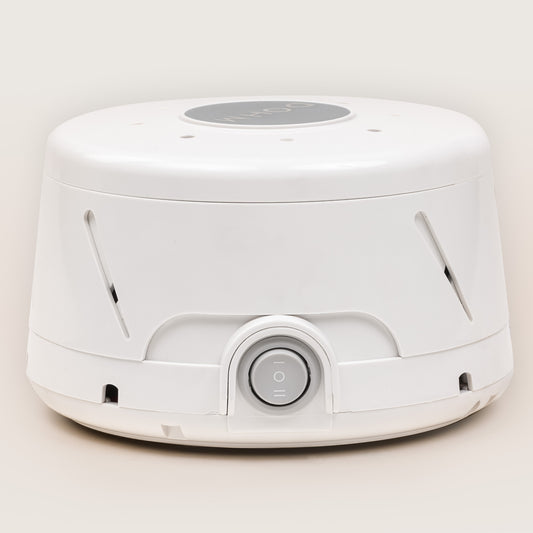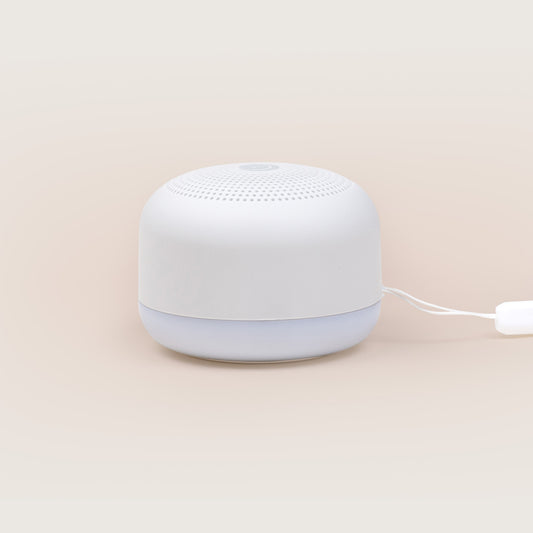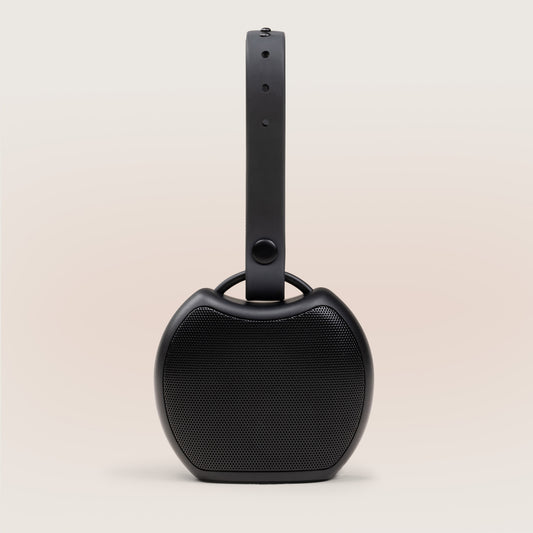
Choosing the Right Pillow for You
Nothing beats resting your head on the perfect pillow after a long, hard day. But with so many types of pillows available, how do you choose the best pillow for you?
Often, when we think of our “dream pillow,” something big, soft, and fluffy comes to mind. In reality, the “right” pillow is one that supports the curve of your spine while keeping your head, neck, and back neutrally aligned. Sometimes this can still be that big, soft, fluffy pillow. But other sleepers may need something different.
Read on to figure out how to choose the pillow that will provide the best support for you, and in turn, the best sleep.
Table of Contents
- Pillow Terms
- Pillow Sizes
- Types of Pillows
- Which Pillow is Right for Me?
- Sleeping Positions
- Your Weight & Build
- Mattress Firmness
- Cooling Qualities / Breathability
- Conclusion
Pillow Terms
There are a few terms you may be unfamiliar with when it comes to pillow shopping. Before we dive into choosing the best place to rest your head, here are a few key words we’ll be using when talking about different pillows.
Loft
Pillow loft refers to the height or thickness of the pillow once your head is resting on it. Pillows usually come in low, medium, or high lofts. A proper pillow loft is important when it comes to sleeping in a healthy position. A pillow that is too thick or too thin can cause neck, back, or shoulder pain, or even lead to breathing difficulties.
Fill
Pillow fill is essentially what makes up the bulk of the pillow. It’s what’s inside the pillow casing that gives a pillow its “fluff.” A pillow’s fill can affect the pillow’s loft, so it’s important to find a good balance between the two.
Firmness
Pillow firmness speaks for itself, but generally refers to the amount of give a pillow provides. Pillow firmness is typically a matter of personal preference, but it can affect the alignment of your neck and spine. Different materials typically result in different levels of pillow firmness.
Pillow Sizes
Standard pillow size dimensions: 20 in x 26 in | 51
cm x 56 cm
Queen pillow size dimensions: 20 in x 30 in | 51 cm
x 76 cm
King pillow dimensions: 20 in x 36 in | 51 cm x 92
cm
Types of Pillows
There are a variety of pillow types — from the kind you get in a double-pack at your local discount store to luxurious, high-end ergonomic and therapeutic pillows. Here, we’ll discuss the most common types of pillows and their general loft, firmness, and filling options to help you narrow down your pillow search.
Standard Pillow
Standard pillows are the most common pillows and are easily found in most local stores. The typical dimensions for a standard pillow are 20 inches by 26 inches, and they come with a variety of stuffing options and a wide price range. Typically made of cotton or polyester, standard pillows are generally the cheapest pillow option. However, standard pillows will not be the best fit for every sleeper.
Cotton Pillow
Cotton-filled pillows are a great hypoallergenic pillow option. They are easy to find, regulate temperature decently, and are a great alternative to people who are allergic to down or feathers. Cotton pillows are easy to wash and keep clean. However, they can get lumpy with age, and may need to be replaced more frequently if they’re not well-maintained.
Gel Pillow
Gel pillows are ideal for those who tend to overheat during the night. These pillows take the advanced cooling properties of gel and combine them with another material, such as memory foam, to provide support. Cooling gel pillows can also be great at soothing neck aches or headaches. They’re excellent options for people with allergies and are generally easy to maintain.
Memory Foam Pillow
Memory foam pillows are becoming increasingly popular. They adapt to the curves and contours of your head and neck and can help keep your spine in alignment so you sleep comfortably. Memory foam pillows can be great for sleepers with neck pain. Just keep in mind that some memory foam pillows are extremely dense, which can restrict airflow and retains body heat. If you’re interested in a memory foam pillow but tend to sleep hot, look for memory foam with cooling capabilities .
Feather Pillow
Typically made of duck or goose feathers, these pillows are known for being large, soft, and fluffy. Feather pillows keep their shape over time and are practically weightless. They can, however, cause issues for allergy-sufferers. Feather pillows are difficult to clean and need to be fluffed often in order to maintain their loft. They also tend to retain heat, so they’re not recommended for hot sleepers or warm summer months.
Down Pillow
Down pillows , like feather pillows, also come from geese or ducks. Sometimes, these pillows are a combination of down and feathers . These pillows are notably soft, lightweight, and durable. Unfortunately, they are not always the best choice for sleepers with allergies. When looking at both down and feather pillows, you may also want to consider how the fill is sourced — not every pillow is ethically produced.
Latex Pillow
Latex pillows are typically looked at as an alternative to memory foam pillows. They usually provide good head and neck support and work well for spinal alignment. Latex pillows are extremely durable and usually resist dust and mites. Unfortunately, latex pillows are prone to having a strong odor, and can also lead to allergic reactions in those with latex sensitivities.

Which Pillow is Right for Me?
You might be surprised to find that there are multiple factors to consider when looking for your perfect pillow — such as your sleeping position, weight and build, mattress firmness, and your general sleeping temperature.
Here, we’ll break down these factors to help you decide on the best pillow for your sleeping needs.
Sleeping Positions
One of the most important things to keep in mind when choosing a pillow is your sleeping position. Whether you sleep on your back, side, or stomach, your pillow can either help or hurt the alignment of your spine.
Back Sleepers
Many experts consider sleeping on your back one of the most beneficial sleeping positions. While getting good support from your mattress is extremely important, your pillow should work in tandem with your bed to support the natural curve of your spine.
When looking for a pillow, look for low to medium loft pillows with medium-firm fill. If your mattress is especially soft, you may want to look for a pillow with low loft, or even try sleeping without a pillow at all. Neck support is crucial for back sleepers, and those with a firmer mattress may benefit from a pillow with more loft.
You may also benefit from placing a small pillow under your knees and/or back to provide extra support for your spine.
Look For:
- Low to medium loft pillows
- Medium-firm fill
- A pillow that keeps your spine in alignment
Side Sleepers
If you’re a side sleeper, your shoulders hold most of your weight while you sleep. Firm pillows will be your best bet, while your ideal pillow loft can vary, depending on your mattress firmness and the support necessary to maintain spinal alignment. The general rule of thumb is that the firmer your mattress is, the more loft your pillow should have.
Some pillows, like the Shoulder Zoned Dough , feature specific shoulder cut-outs, making them ideal choices for side sleepers.
Look For:
- A firm fill
- Low, medium, or high loft
- Head, neck, and spine alignment
- Shoulder pressure relief
Stomach Sleepers
Finding the right pillow is especially important for stomach sleepers, as using the wrong pillow can lead to shoulder, neck, and back pain. If you sleep on your tummy, look for a pillow with a low loft and a soft, cushiony fill. Make sure your neck and back aren’t strained when laying down. You may also want to try putting a thin pillow under your stomach and hips to help your spine maintain its natural curve.
Look for:
- Low loft
- Soft and cushiony fill
Other Cases
Some people may have very specific pillow needs. Different styles of pillows can be used during pregnancy, to support injuries and disabilities, or even to provide neck support when traveling .
Lounge pillows , L-shaped pillows , wedge pillows , wrap-around pillows , and horseshoe-style pillows can provide extra support and comfort during sleep or when lounging in bed. Don’t be afraid to use a combination of pillows to achieve the most comfortable sleep position for your personal needs.
Your Weight and Build
Your weight and build are also factors that can influence your pillow decision. In most cases, the wider your shoulders are, the higher your pillow loft should be. If you sink into your mattress, go for a pillow with a lower loft.
Mattress Firmness
As you’ve probably already gathered, your mattress firmness plays a big role in the type of pillow that will best suit your needs. Generally, the firmer your mattress is the higher your pillow should be, and vice versa.
Cooling Qualities and Breathability
If you’re prone to sleeping hot, you might want to look for pillows specifically made with cooling benefits. Gel pillows are a great option, as are pillows infused with copper — copper naturally pulls heat away from the body, keeping you cool throughout the night .

Conclusion
Hopefully, we’ve cleared a few things up when it comes to choosing the right pillow. Here’s a short checklist to keep in mind when looking for that perfect pillow:
- Size
- Sleeping Position
- Your Weight and Build
- Mattress Firmness
- Pillow Loft
- Pillow Firmness
- Cooling Qualities / Breathability
Have we helped you choose a perfect pillow for a peaceful night’s rest? Let us know on Instagram !













